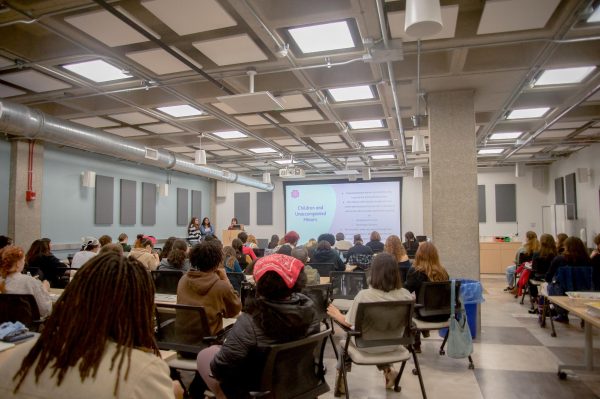Title IX Office Must Ensure Support for Survivors Post Doe v. Oberlin
Doe v. Oberlin is in the news again. The most recent case was filed in 2020 by “John Doe,” a student at Oberlin College who was reported to the Title IX Office for sexual misconduct and who alleged that the office had engaged in various violations of federal due process, violations of Title IX, and violations of state tort laws. Doe was subsequently found by the Title IX Office not to have violated the Sexual Misconduct Policy, effectively nullifying his primary and premature argument that the office produced an “erroneous outcome,” and the case was dismissed. An appeal, which alleged that the office acted wrongfully in its investigation of him despite its favorable findings, was returned to the lower courts just a month ago and is now available to be tried.
This case should sound familiar. It is not the first Doe v. Oberlin, nor is it the first case in which Oberlin’s Title IX Office has been the subject of scrutiny raised by an accused student. A different “John Doe,” who was expelled by the College following an accusation of sexual assault, filed a suit asserting that the office had produced “an erroneous outcome in a student’s disciplinary proceeding because of the student’s sex” in 2017. Upon appeal, the student received a favorable opinion from the sixth circuit.
Based upon other apparent irregularities in the first Doe’s case, in tandem with explicit policies by the office and statistics, the court claimed to find evidence of discrimination in the office’s general “patterns of decision making.” The purpose of my article is not to make a claim as to Doe’s guilt — or lack thereof — or whether his expulsion was justified, nor do I necessarily dispute that “irregularities” or misconduct were present in the handling of his case. I do, however, take issue with his claim of sex discrimination.
Cited in the opinion and employed in support of what the court asserts is a “plausible inference” of such discrimination is Oberlin’s instruction to its faculty, upon a revision of its Sexual Misconduct Policy in 2015, to “‘[b]elieve’ students who report sexual assault, because ‘a very small minority of reported sexual assaults prove to be false reports.’” Cited additionally in Doe’s complaint is that “during the very academic year in which Doe’s “‘responsibility’ was determined — ‘every single case’ that went to a hearing panel resulted in a decision that the accused was ‘responsible’ (i.e., guilty) on at least one charge.”
Doe’s particular case notwithstanding, this 100 percent responsibility rate does not strike me in and of itself as alarming, nor does it seem to me to be implausible. Rather, I take it to be reflective of the unfortunate prevalence of sexual assault on college campuses. That most, if not all, of the respondents were male in these cases is not, in my opinion, an indicator of a vendetta on the part of the office against male students but rather of the predominant demographic of perpetrators of sexual assault.
I believe in the veracity of Oberlin’s previous claim that “a very small minority of reported sexual assaults prove to be false reports.” I believe that reporters of sexual assault on campus, who might happen to be disproportionately female, should be taken seriously. No, the Title IX Office, which has a responsibility to both parties, should not neglect the rights of the accused in doing so. Yes, any reported sexual assault — including that by John Doe — could fall under the minority that prove to be false reports. Yes, the prospect of the Title IX Office finding responsibility on the part of an accused perpetrator where there is none is concerning.
But to suggest that what may very well be a misguided policy of believing accusations, no matter how dubious, to the extreme (if rare) extent that a clearly wrongfully accused student might be found responsible is the product of sex discrimination is to engage in a grave and dangerous distortion of the problem. As noted by Survivors of Sexual Harm and Allies, a student organization on campus dedicated precisely to the type of support for survivors that Title IX’s responsibility to accused students might otherwise inhibit it from providing, this notion ignores the reality that “anyone can be a victim — no matter their gender, sexual orientation, or age.”
I do not make a claim here to the particularities of Doe’s case, but neither is the court’s opinion based upon “‘a particularized causal connection’ between [a] flawed outcome and sex bias” in his investigation. Oberlin’s blanket statement of support for students who report sexual assault does not support any variance in treatment of student reporters, and it should apply to all in practice. To only support female victims of sexual assault and only indict male perpetrators against female students would be to ignore a large swath of potential victims and to engage in sex discrimination of a different kind. If the aforementioned statistics of Oberlin’s responsibility rate are indicative of any misconduct on the part of the office, it is not that reports against male students are so often believed, but that potential non-male perpetrators are not accounted for.
If Oberlin has indeed erroneously found Doe, and perhaps other male students, to be responsible for the misconduct reported against them, I find the problem to be primarily an overzealousness in the Title IX Office’s attempts to secure justice for its female reporters. This certainly is wrong, though the Title IX Office should still retain its commitment to support for both them and accused students. The Title IX Office should apply the same vigor to its handling of other reports, an issue that I find more pressing and that I feel will be instrumental in implementing its express commitment to “maintaining a campus environment free from discrimination based on sex, gender identity, [and] gender expression.” In order to prevent these behaviors among its students, the office should first look toward its own conduct.




